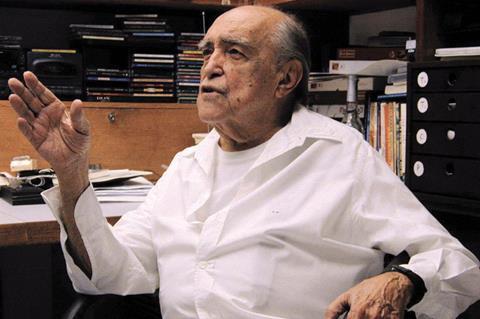How did 2012 pan out for industry disputes, the nuclear sector and BIM?
DISPUTED RESULTS
Blacklisting row

The story may have begun four years ago, but - which broke when the Information Commissioners Office seized a database from a body called the Consulting Association in 2009 - just grew and grew in 2012. In July it emerged that 80 construction workers had launched a high court claim against contractor Sir Robert McAlpine over the firmŌĆÖs involvement in blacklisting.
A separate action against Carillon followed. Then the ICO announced that it would contact all 3,200 workers on the Consulting Association blacklist, potentially massively swelling the number of claimants and possibly pulling more construction firms into legal wrangles. By the end of the year the scandal threatened to engulf the public sector too, with claims from the former Consulting Association chief executive that the companyŌĆÖs services were used on a host of public sector projects, including the Olympics.
Workers revolt
This year the construction sectorŌĆÖs biggest industrial relations dispute for over a decade came to an end. The dispute centred on controversial wage proposals for 6,000 electricians, known as the ║├╔½Ž╚╔·TV Engineering Services National Agreement (BESNA). The firms behind BESNA - Balfour Beatty Engineering Services, NG Bailey, Crown House, Shepherd Engineering Services, Gratte Brothers, SPIE Matthew Hall and T Clarke - argued the changes would modernise a badly out-dated specialist sector. BESNAŌĆÖs opponents - led by union Unite - argued BESNA was a front for wage cuts. The dispute led to five consecutive months of protests, including a 1,000-strong London rally, a sit-in of a contractorŌĆÖs headquarters and violent clashes with police. The dispute finally came to an end in February when all seven firms agreed to drop the BESNA proposals and re-enter negotiations with Unite. These negotiations are still on-going.
FINAL FAREWELLS

. The Brazilian architect was a highly influential figure in both his home country and the rest of the world. Considered by many to have been one of the key figures in the development of modern architectural styles he is perhaps most well known for his role in designing Brasilia, BrazilŌĆÖs capital city built in the fifties and sixties.
, a prominent champion of sustainability in the built environment, died age 38 in July this year. An associate director at architect PRP, Starrs was a well-known advocate of sustainability in the built environment, and wrote a regular blog for ║├╔½Ž╚╔·TV magazine. In a statement, her partner Mark Fretwell said: ŌĆ£She was my beautiful, funny and utterly brilliant partner-in-crime for more than 11 years, and words will never be able to express how much I am going to miss her.ŌĆØ
At this time of year it is also worth remembering that despite so much hard work on health and safety issues in recent years, the construction industry remains the UKŌĆÖs most dangerous industry in which to work. In total 49 workers died on UK construction sites in 2011/12, while August saw the tragic death of Amanda Telfer, who was struck by a window falling from a construction site in LondonŌĆÖs Hanover Square.
NEW KIT ON THE WAY

It has been an unstable year for the nuclear sector. Continued uncertainty over the level of government support for nuclear power has cast a shadow over development, which has a gestation period best measured in half lives anyway. But as the end of the year draws near the publication of the Energy Bill may be a beacon of light.
The surprise sale of Horizon Nuclear Power, the Npower and E.ON-owned project, was another cause for concern, but was resolved with Hitachi stepping in with minimal loss of time.
There have been chinks of light too, though. Bouygues and Laing OŌĆÖRourke were appointed to the ┬Ż2bn Hinkley Point C civils job in June. Balfour Beatty subsidiary Dean & Dyball Civil Engineering also picked up the ┬Ż30m contract to build the projectŌĆÖs temporary jetty, a small consolation for losing out to Laing OŌĆÖRourke on the big job. And Morgan SindallŌĆÖs new Cumbria office justified its opening by winning a ┬Ż1.1bn job at Sellafield. But SellafieldŌĆÖs contractors also received a lashing from the National Audit Office, which said they did not provide value for money on major projects.
Next year looks more promising. Provided EDF gives the go-ahead on Hinkley in the first quarter, which seems likely, expect a rapid escalation of activity.
TECHNICAL SUPPORT
This was the year that transferred from a slide in Paul MorrellŌĆÖs much-used Powerpoint presentation to an industry-wide phenomenon. ItŌĆÖs a topic of conversation in many a boardroom - how best to prepare your firm for working on BIM projects? Everywhere you looked in 2012 firms - including Balfour Beatty and Bam - were striking multimillion-pound deals with software providers to get ahead in the BIM arms race.
BIM is a process for designing a building or structure collaboratively by using one coherent system of computer models. Its early proponents will tell you it has been around for over a decade, but what has prompted the recent surge of adoption is the governmentŌĆÖs plan to mandate BIM on all government projects by 2016. This year Interserve began work on the first government BIM trial project, the extension of Cookham Wood prison, which the Ministry of Justice says has already reaped ┬Ż800,000 of savings. Several further government trials will follow next year.
In the meantime, the private sector is surging ahead with BIM adoption - in fact, ║├╔½Ž╚╔·TV research in April found that private sector clients were almost twice as likely to have experience of BIM than those in the public sector.
Not everyone is fully signed up. Various surveys this year have found that most surveyors and SMEs are yet to adopt the technology.
Furthermore, cracks are beginning to emerge on live BIM projects, where specialists in particular warn of rising software costs and poor practice by tier one contractors. Next year weŌĆÖll see if the BIM rhetoric can match the reality.




























No comments yet